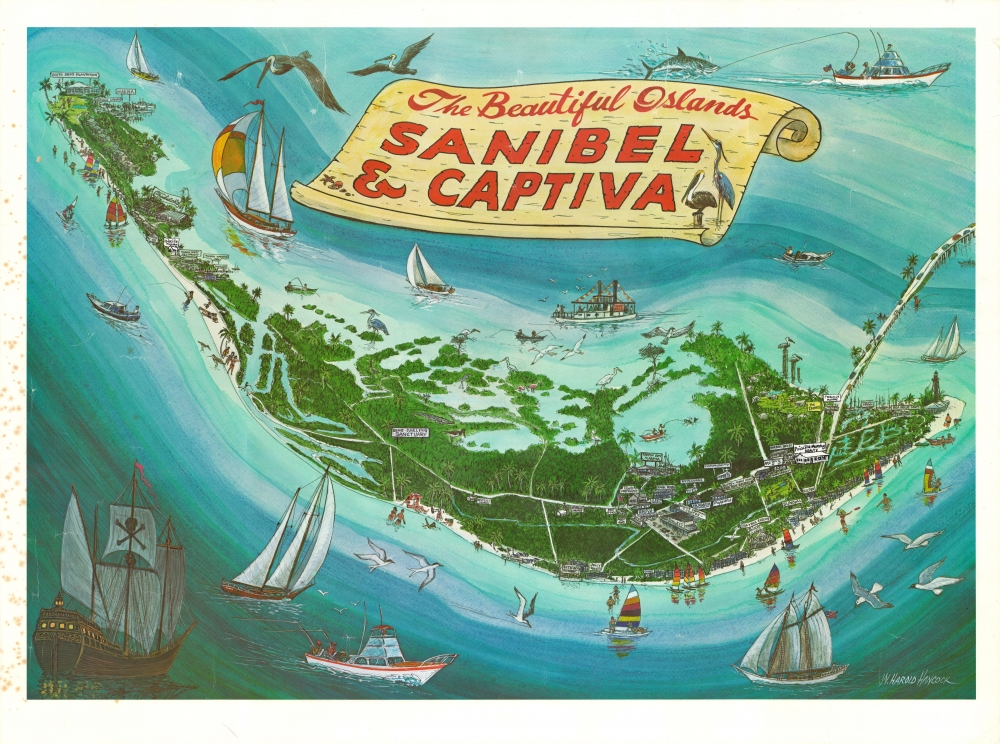This item has been sold, but you can get on the Waitlist to be notified if another example becomes available.
1980 Hancock Pictorial Map of Sanibel and Captiva Islands, Florida
SanibelCaptiva-hancock-1980
Title
1980 (undated) 17.5 x 23.75 in (44.45 x 60.325 cm)
Description
A Closer Look
Emphasizing the area's maritime orientation, the view includes ships, sailboats, and canoes, along with beachgoers, gulls, herons, alligators, and other fauna. On land, a main road (Sanibel Captiva Rd.) runs from the Sanibel Causeway to the end of Captiva Island. Local businesses and other communal sites are noted, including the post office, hotels and inns, resorts, churches, marinas, a shopping center, restaurants, golf courses, a natural sanctuary, and several locations of Priscilla Murphy Realty, which stand out prominently in white, suggesting that the view might have been produced for that business. The pirate ship at bottom left alludes to the history of piracy along the southern coast of Florida, 'though much of the supposed history of piracy near Sanibel and Captiva looks to be a myth, tied to the apocryphal figure José Gaspar (Gasparilla).Publication History and Census
This view was drawn by William Harold Hancock around the year 1980. There are no known examples in institutional collections and it is very scarce to the market.Cartographer
William Harold Hancock (October 24, 1920 - July 11, 2006) was an American commercial artist and landscape illustrator based in Indiana, Fort Myers, Florida, and his native Illinois. Hancock was born in Harrisburg, Illinois. He emerged as a gifted artist in his teens, when he won a national poster contest. By high school he was already an active local artist, charging 35 cents to paint shop windows. In 1939, he turned down tradition college scholarships to open his own studio at age 18 in 1939, but left soon afterwards to serve as a military artist during World War II (1939 - 1945). After the war, he moved to Indiana and studied at the John Herron Art Institute. He travelled widely throughout the United States and beyond, maintaining studios at Lake Tahoe, Ft. Myers, and Newcastle in the United Kingdom, and working with a variety of subjects including landscapes and portraits. More by this mapmaker...

